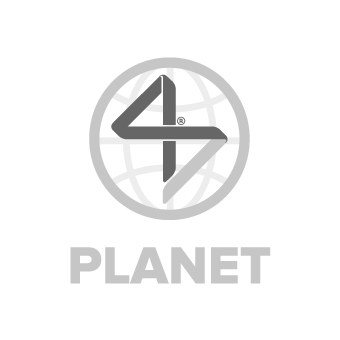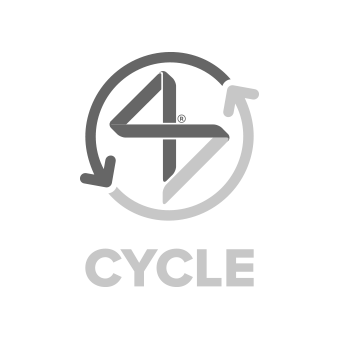
C.T. Point SpaID Nr. 4S-100509e-report version 3.0

C.T.Point S.p.A. is a 100% Italian company, leader in the production of high tenacity polyester and nylon threads, both braided and twisted, for footwear,
luxury leather goods, upholstery and other technical sectors. The company has always been characterized by the quality and the wide range of its products,
obtained through high flexibility in manufacturing and customization of products to customers, thanks to efficient management of plants and warehouses,
and the development of new machinery and projects for innovative threads which allowed C.T. Point to make its brand well known in Italy and abroad.
www.ctpoint.it
4SUSTAINABILITY® COMMITMENT
Growth and sustainability are the factors for which we want to stand out, founding our strategy on the belief that ethical approach should characterize our business model. We firmly believe there cannot be a long-term economic development without a social and environmental development.
Inspired to and aligned with the Sustainable Development Goals set by the United Nations in the 2030 Agenda (SDGs), we’re committed to contributing to the generation of global positive change, assuming a clear environmental and social responsibility.
We do it concretely by joining the 4sustainability® roadmap, making the values and action programs it embodies our own, committing ourselves to starting a virtuous change journey in our business model, through one or more initiatives that we tell in this e-report.
this initiative contributes to the following main UN Sustainable Development Goals



DATA REFERENCE PERIOD
from 01/07/2021 to 31/06/2022
LAST ISSUE DATE
26/10/2022
IMPLEMENTATION LEVEL

the implementation level is defined after the assurance process following the achievement of the protocol’s minimum requirements and is reviewed annually
The company has mapped and assessed the raw materials used to manufacture its products and identified more sustainable alternatives protected by patent or otherwise attested, certified or validated as set out in the 4s Materials Library. The main certifications are displayed below.
The report highlights the purchases share calculated in volume, as well as the sustainable items share sold in the current year with recognized and verified positive sustainability attributes.

8%
percentage of sustainable materials sourced
INPUT
The input percentage indicates the proportion of raw materials with recognized sustainability attributes. The calculation is performed by mapping the purchases made during the year and highlighting the share-volume of the sustainable ones based on the positive attributes as defined in the 4s Materials Library.
BREAKDOWN OF SUSTAINABLE MATERIALS BY TYPE OF FIBRE
0%
percentage of incoming sustainable packaging
SUSTAINABLE PACKAGING
The sustainable packaging indicates the amount of primary or secondary packaging material for which the producer employed techniques and input factors that lead to an improvement in environmental performance.
INPUT
The input percentage indicates the proportion of chemical products that are approved by sustainability standards. The calculation is performed by mapping the chemical inventory during the year and highlighting the number of chemical products compliant with the sustainability requirements of 4sustainability Materials protocol.
31%
percentage of incoming chemical products approved by sustainability standards
100%
percentage of chemical processes approved by sustainability standards
INPUT
The input percentage indicates the proportion of chemical processes that are approved by sustainability standards. The calculation is performed by mapping the processes carried out internally by the company during the year and highlighting the ones compliant with the sustainability requirements of 4sustainability Materials protocol.
OUTPUT
The output percentage indicates the share-volume of the items in the designed and manufactured collection with recognized sustainability attributes, calculated in terms of the overall production.
2%
percentage of the volume of sustainable items sold
elimination of toxic and harmful chemicals from production cycles in line with the ZDHC Roadmap to Zero Programme
this initiative contributes to the following main UN Sustainable Development Goals



IMPLEMENTATION LEVEL

the implementation level is defined after the assurance process following the achievement of the protocol’s minimum requirements and is reviewed annually
The company has adopted the ZDHC MRSL for eliminating toxic and harmful chemicals from its processes and the 4S PRSL for raw material control. It has also implemented all the ZDHC CMS TIG requirements on internal and external processes.
CHEMICAL MANAGEMENT SYSTEM SCORE
71%
the percentage indicates the overall level reached through the implementation of 4s CHEM protocol requirements
ASSURANCE PROTOCOL
PRODUCTION VOLUMECOVERED BY MONITORED CHEMICAL INVENTORIES
100%
percentage of internal and external production subject to chemical inventory assessment
INTERNAL CHEMICAL INVENTORY EVALUATION
chemical inventory compliance percentages by self-declarations and by escalating ZDHC levels
this initiative contributes to the following main UN Sustainable Development Goals



DATA REFERENCE PERIOD
from 01/01/2019 to 31/12/2019
LAST ISSUE DATE
29/09/2022
IMPLEMENTATION LEVEL

the implementation level is defined after the assurance process following the achievement of the protocol’s minimum requirements and is reviewed annually
The company has identified its main environmental impacts and implemented a calculation of its Water Footprint and/or Carbon Footprint and has started a roadmap for impact reduction on direct and indirect footprint.
MAIN ENVIRONMENTAL IMPACTS
The main company impacts are calculated starting from the direct ones. The calculation is then extended to include indirect impacts according to their order of relevance.
Consumption here on the side refers to an annual production of 429.647 kg.
CONSUMPTION
2.276.731Kwh
ELECTRIC ENERGY
2.192.775Kwh
THERMAL ENERGY
14.730.000liters
WATER VALUE
CO2eq (CARBON DIOXIDE)
3.103.941,60KG
total emission (e.g. energy and water consumption, waste, fuels, packaging...)
ENERGY
SOURCES
40%

OTHER
SOURCES
60%

FROM
SUPPLY CHAIN
0%

DIRECT USE
100%

INDIRECT USE
0%

WATER
14.730.000L
total consumption







